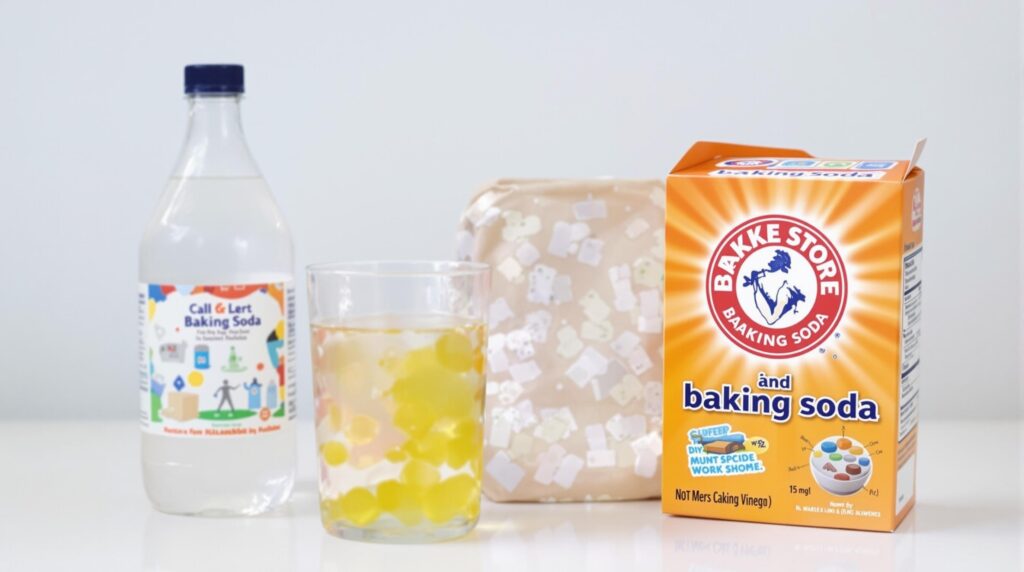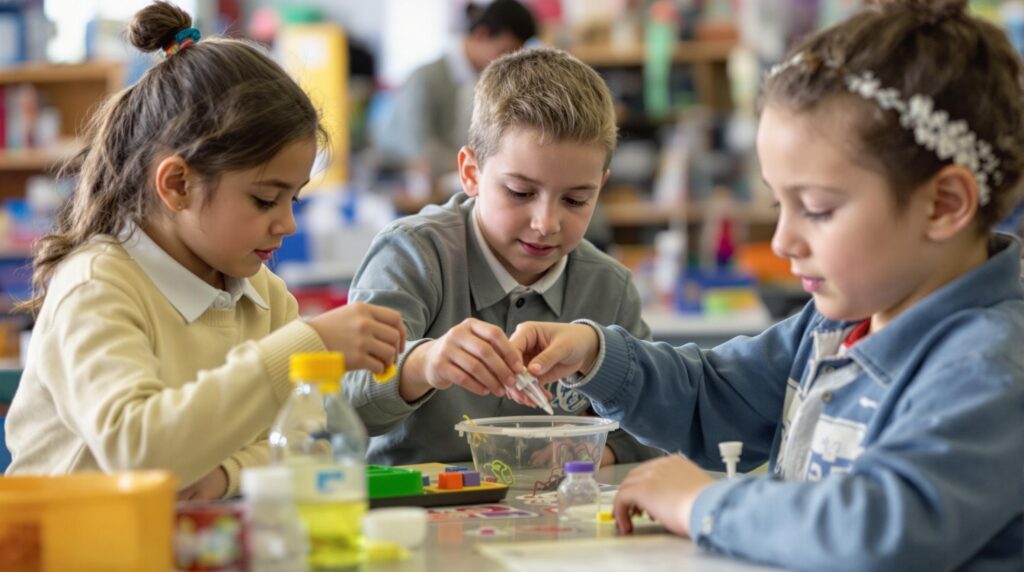Egg drop contests offer a perfect blend of science and creativity, allowing children to explore physics principles while having a blast. These educational STEM activities challenge kids to design protective containers that prevent eggs from breaking when dropped from heights, teaching valuable lessons about force, gravity, and impact absorption.
Key Takeaways
- Parachute designs help slow descent and reduce impact force on eggs
- Using everyday household materials makes egg drop contests accessible and budget-friendly
- Egg drop activities teach fundamental physics concepts through hands-on experimentation
- Incorporating design challenges encourages creative problem-solving skills
- Multiple testing opportunities help children refine their scientific understanding
Why Egg Drop Contests Are Valuable STEM Activities
Egg drop contests provide the perfect opportunity for children to engage with scientific principles in action. These activities transform abstract physics concepts like kinetic energy, potential energy, and momentum into tangible experiences. When kids design containers to protect fragile eggs, they’re actually exploring how forces work and developing critical thinking skills.
These contests create a low-pressure environment where trial and error become valuable learning tools. Students get to see immediate results from their designs, fostering a deeper understanding of cause and effect. The hands-on nature of egg drops makes science accessible and exciting, even for children who might not typically enjoy traditional science lessons.
Beyond physics, egg drops introduce engineering concepts as children work within constraints to solve problems. They learn to consider variables like material properties, weight distribution, and impact absorption. This multi-disciplinary approach helps connect different areas of STEM education in a single, engaging activity.

10 Creative Egg Drop Contest Ideas
Ready to host an unforgettable egg drop challenge? Here are ten innovative egg drop contest ideas that combine learning with excitement:
1. Parachute Egg Protector
Create a simple parachute using plastic bags or fabric squares attached to a lightweight container holding the egg. The air resistance from the parachute slows the descent, reducing impact force. Children can experiment with different parachute sizes and materials to find the optimal design.
2. Straw Structure Challenge
Using only drinking straws and tape, build a structure that can cushion an egg during a fall. This constraint forces children to think creatively about energy absorption and structural integrity. The flexible nature of straws makes them excellent shock absorbers when arranged correctly.
3. Bubble Wrap Wonder
Design an egg container using only bubble wrap and rubber bands. Kids will discover how air pockets in bubble wrap provide excellent impact protection while keeping the overall weight low. They can test different wrapping techniques to find the most effective method.
4. Egg Basket Copter
Combine the egg drop with a helicopter design using paper or plastic propellers attached to a small basket containing the egg. When dropped, the spinning motion creates drag and slows the descent. This introduces concepts of rotational forces and air resistance.
5. Cereal Box Engineering
Repurpose cereal boxes and internal padding materials to create egg protection systems. This recycled materials challenge teaches sustainability alongside engineering principles. Children learn to repurpose everyday items for new functions.
6. Water Balloon Buffer
Suspend the egg inside water balloons to create a liquid cushion. The fluid dynamics at work help distribute impact forces away from the egg. This unique approach introduces concepts of hydraulics and pressure distribution.
7. Cardboard Tube Roller Coaster
Design a series of connected cardboard tubes that create a spiral pathway for the egg to travel down instead of free-falling. This gradual deceleration method teaches children about momentum and controlled energy transfer.
8. Popsicle Stick Cage
Construct a geometric cage using popsicle sticks and glue that can flex upon impact without breaking. Children learn about structural engineering and how certain shapes distribute forces more effectively than others.
9. Cotton Ball Cloud
Create a container filled with cotton balls surrounding the egg. The progressive compression of the cotton provides excellent shock absorption. This simple approach demonstrates how soft materials can effectively protect against impact.
10. Spaghetti Tower
Build a tall tower structure using uncooked spaghetti and marshmallows with the egg suspended inside. The flexible pasta strands bend upon impact, absorbing energy before breaking. This challenge introduces concepts of crumple zones and sacrificial structures.
Materials and Preparation Tips
Successful egg drop contests require thoughtful preparation and the right materials. I recommend gathering a diverse collection of household items that offer different protective properties:
- Cushioning materials (cotton balls, bubble wrap, foam)
- Structural items (straws, popsicle sticks, paper cups)
- Connectors (tape, glue, rubber bands, string)
- Impact absorbers (balloons, paper, fabric)
- Containers (small boxes, plastic containers, paper bags)
Consider setting specific constraints to enhance the learning experience. You might limit the size of the final container, restrict certain materials, or add weight limitations. These design parameters encourage more creative problem-solving and better simulate real-world engineering challenges.
Don’t forget to prepare your testing area properly. Measure and mark the drop height consistently, and create a designated landing zone that’s easy to clean. Having extra eggs on hand is always wise, as breakage is part of the learning process!
Running a Successful Egg Drop Competition
To ensure your egg drop contest runs smoothly, establish clear rules and judging criteria from the start. Consider these key elements for your competition structure:
- Time limits for construction (30 minutes to 1 hour works well)
- Material restrictions or budgets
- Drop height specifications (start lower for younger children)
- Success metrics beyond egg survival (design creativity, scientific principles applied)
- Multiple testing opportunities to refine designs
Incorporate educational moments throughout the activity. Before dropping, ask children to explain their design choices and what scientific principles they’re applying. After drops, facilitate group discussions about what worked, what didn’t, and why certain designs performed better than others.
Consider adding fun variations to keep engagement high. Try multiple drop heights, different surfaces, or even underwater egg drops for advanced groups. Adding these challenges helps children understand how environmental factors affect their designs.
The Science Behind Egg Drop Contests
Egg drop contests bring fundamental physics concepts to life. When an egg falls, it accelerates due to gravity, building up kinetic energy. Upon impact, this energy must be dissipated to prevent the egg from breaking. Successful designs accomplish this through several scientific principles:
- Deceleration time: Extending the time of impact decreases force
- Force distribution: Spreading impact force over a larger area reduces pressure on any single point
- Energy transformation: Converting kinetic energy into other forms (heat, sound, or mechanical deformation)
- Air resistance: Creating drag to slow descent speed
Take time to explain these concepts in age-appropriate ways. For younger children, simple demonstrations help illustrate the principles. For older participants, introduce mathematical formulas like F=ma (Force = mass × acceleration) to calculate impact forces and discuss how their designs counteract these forces.
Educational Benefits and Learning Outcomes
Egg drop contests deliver substantial educational value beyond just the fun factor. Children develop critical STEM skills including:
In the realm of scientific thinking, kids learn to form hypotheses about what might protect the egg, test their ideas, observe results, and refine their approach. This scientific method application helps build foundational research skills.
Mathematical concepts come into play as children calculate and measure materials, consider weight distribution, and potentially analyze data from multiple trials. Spatial reasoning improves as they visualize and construct three-dimensional protective structures.
Perhaps most importantly, egg drop contests foster resilience and adaptability. When designs fail (and some certainly will), children learn that failure is simply information—not a dead end. This growth mindset serves them well across all academic disciplines and life challenges.
Extending the Learning Experience
To maximize the educational impact of your egg drop contest, consider these extension activities:
- Have participants document their design process in journals or digital portfolios
- Create graphs comparing different designs and their success rates
- Challenge students to improve their designs after learning about successful approaches
- Connect the activity to real-world applications like car safety features or package delivery systems
For older children, introduce more complex physics concepts like momentum, impulse, and energy conversion. Ask them to calculate theoretical impact forces and explain how their designs mitigate these forces.
Consider hosting a multi-session challenge where participants iterate on their designs over several days or weeks. This extended timeline more accurately reflects real engineering processes and deepens understanding through repeated experimentation.
Conclusion
Egg drop contests represent one of the most engaging and effective ways to bring STEM concepts to life for children. Through these challenges, abstract physics principles become tangible, and engineering problems find creative solutions. The hands-on nature of egg drop activities creates memorable learning experiences that stick with children long after the last egg has fallen.
Whether you’re a teacher looking for classroom activities, a parent seeking educational weekend projects, or a STEM club organizer planning competitions, these ten egg drop contest ideas provide versatile starting points for meaningful learning. The beauty of these activities lies in their simplicity—with everyday materials and a little imagination, children can explore complex scientific concepts while having tremendous fun.
So gather your materials, set up your drop zone, and watch as young minds engage with science in ways that textbooks simply can’t match. The broken eggs along the way are a small price to pay for the valuable lessons and memories being created.



